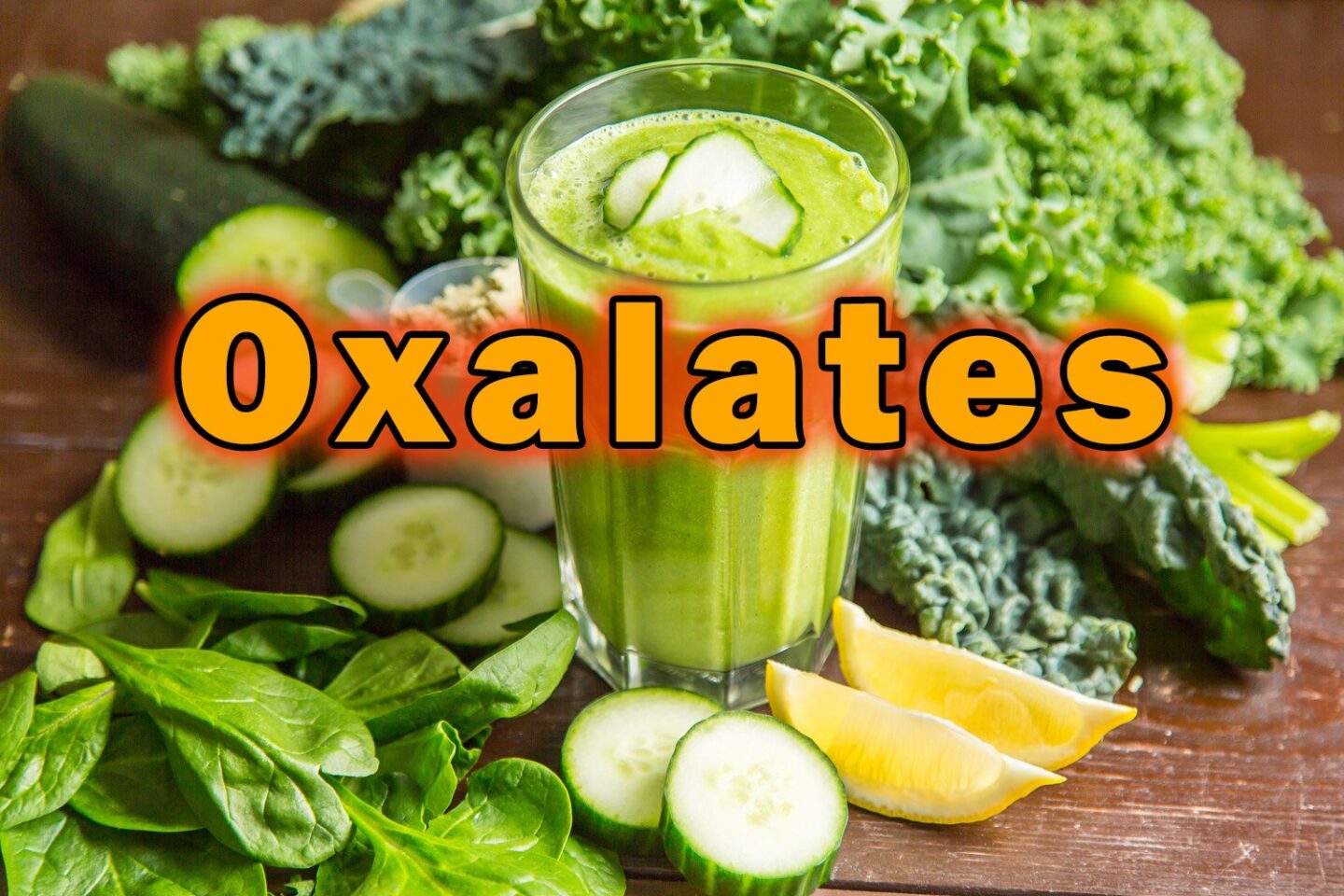In our last post, we looked at the dangerous lectins. Another very sinister defense mechanism in plants are oxalates (oxalic acid). The definition of oxalic acid is “a poisonous strong acid (COOH) that occurs in various plants as oxalates and is used especially as a bleaching or cleaning agent and as a chemical intermediate”.
Oxalic acid is actually lethal in high doses. There have been a few recorded deaths of oxalate poisoning after overconsuming oxalate-rich ‘foods’. While these were in children and metabolically sick adults, there are also recorded incidents where farmers were talked into giving their sheep kale as a cheap fodder alternative, just to end up having most of their herd die of acute poisoning.
When looking at oxalates, they are sharp edgy crystals that can pierce a predator’s mouth, thereby playing a role in plant defense. Even worse, when consumed, oxalates bind with several minerals and especially with calcium. These sharp calcium crystals will travel in our bloodstream, making small tears in our blood-vessels and contributing to cardiovascular disease. Some of these calcium-bound oxalate crystals will accumulate in our joints and soft tissues where they will cause inflammation and calcification – contributing to arthritis and fibromyalgia symptoms (muscle pains, chronic fatigue, brain fog, hormone imbalance, insomnia and headaches). These deposits will build up over time. They can also accumulate in the eyes, causing cataract and blurred vision.
With all this in mind, oxalates are most well-known for forming kidney stones. More than 80% of all kidney stones are from calcium oxalates.
Oxalate crystals cause renal- and bladder damage; they are neurotoxic; your body will try to detox them, they will upset the GI tract, deplete glutathione, and corrode connective tissue (via interference with hyaluronic acid). Oxalates also cause a condition in women called vulvodynia, which results in painful sex because of oxalic acid crystals in the labia.
Oxalates also bind to iron, potassium, sodium, and magnesium (in the same fashion as phytic acid) – rendering them useless to our body if consumed at the same time as oxalates.
The presence of oxalates will also make plant protein (especially in legumes) of poor quality and much less bioavailable (absorbable), as seen in several studies done on absorbability of plant amino acids. So, no. Beans are not a source of protein, just the opposite.
Many people think spinach and kale are good sources of calcium and other important minerals. But this is a big misconception. The calcium in these plants is completely useless. It’s all tied up in oxalate. And this is true for all high-oxalate foods.
This problem is prevalent in most plants (vegetables, legumes, fruits, nuts, seeds, and etcetera). Within a lab-setting, we can measure the mineral and vitamin content in plants, but that doesn’t mean it’s available as a bioavailable nutrient to our body. There is a big difference in the nutrition measured in any plant ‘food’ and the nutrition that the body can actually absorb, convert and use.
Absorption of oxalate differs among people. For some, the majority of oxalate is broken down in the gut by probiotic gut bacteria and eliminated without causing too much harm. This however, does not make you immune to its dangers – it simply means that you can tolerate it longer before your body degrades and gets really ill. In others, most of the consumed oxalate is absorbed and their health can go downhill pretty fast – especially in someone with a compromised digestive system, such as “leaky gut” syndrome.
Oxalates are abundant in a lot of plant foods, especially in the seeds. They occur in over 200 plant families, and in some plants they comprise over 80% of the dry weight(!) The highest concentrations are found in leafy greens/cruciferous vegetables such as kale, spinach, cauliflower, and broccoli. Other high-oxalate sources include soy, fruits, nuts (especially cashews and almonds), seeds, berries, beans, beets, celery, potatoes, okra, eggplant, leeks, rhubarb, tofu, black tea, coffee, cocoa, beer and anything in the buckwheat family (especially sorrel).
In other words, doing green smoothie “cleanses” may actually be the most harmful thing you can do to your body, most likely to lead you to needing an oxalate cleanse instead.
In fact, you should NEVER do a ‘cleanse’ using anything from plant foods. You do not cleanse or detoxify by adding toxins and poison to your body. That kind of thinking is retarded. If you want to ‘cleanse’ or ‘detoxify’ you do a simple water fast.
And no, don’t even bother with rinsing, soaking, sprouting, and cooking in order to try to eliminate oxalates, other antinutrients and toxins. Yes, a small percentage will be removed, but so will any of the tiny amounts of nutrients that actually might exist in the plant – leaving you with a totally useless sludge of fiber and some toxins.
